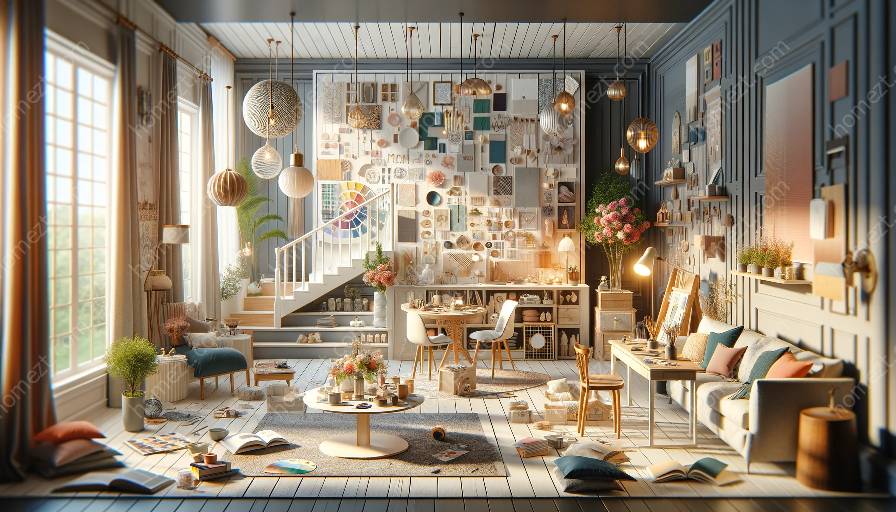Interior design has witnessed a significant shift towards sustainable and eco-friendly approaches in recent years. This trend not only reflects a commitment to environmental responsibility but also incorporates innovative and stylish concepts. In this article, we will explore the latest trends in sustainable design concepts for interior spaces, including mood boards, design concepts, and styling.
1. Biophilic Design
Biophilic design, which focuses on incorporating natural elements into interior spaces, has gained momentum in sustainable interior design. This concept emphasizes the integration of natural light, plant life, and natural materials to create spaces that promote health and well-being. Mood boards for biophilic design often feature imagery of lush greenery, natural textures, and earthy color palettes to evoke a sense of connection to the natural world.
2. Reclaimed and Upcycled Materials
Another key trend in sustainable design is the use of reclaimed and upcycled materials. Design concepts now emphasize the repurposing of materials such as reclaimed wood, salvaged metal, and recycled glass to create unique and environmentally conscious interior spaces. Mood boards for this trend often showcase the beauty of aged wood, distressed metal, and vintage textiles, highlighting the aesthetic appeal of reused materials.
3. Energy-Efficient Lighting
The integration of energy-efficient lighting solutions has become essential in sustainable interior design. LED lighting, smart lighting systems, and natural daylighting strategies are being prioritized to reduce energy consumption and lower environmental impact. Design concepts for energy-efficient lighting often feature sleek and modern fixtures, as well as mood boards that emphasize the importance of balanced and sustainable illumination.
4. Minimalist and Functional Furniture
Sustainability in interior design extends to furniture choices, with a focus on minimalist and functional designs that prioritize longevity and multifunctionality. Design concepts for sustainable furniture often emphasize clean lines, modular arrangements, and versatile pieces that can adapt to evolving spatial needs. Mood boards reflect this trend by showcasing sleek, timeless furniture designs and versatile space-saving solutions.
5. Eco-Friendly Textiles
The use of eco-friendly and organic textiles has become a prominent feature of sustainable interior design concepts. From natural fibers such as hemp and linen to recycled fabrics, there is a growing emphasis on integrating environmentally responsible textiles into interior spaces. Mood boards for eco-friendly textiles often feature soft, tactile imagery and color palettes that embody the natural beauty of sustainable materials.
Styling Sustainable Interior Spaces
When styling sustainable interior spaces, it is essential to consider the overall aesthetic and functionality while maintaining a focus on eco-friendly choices. Incorporating sustainable design concepts into mood boards allows designers to convey the essence of sustainability through visual storytelling. By carefully curating imagery that aligns with the latest trends in sustainable design, mood boards can inspire clients and collaborators, effectively communicating the vision for environmentally conscious interior spaces.
Conclusion
The latest trends in sustainable design concepts for interior spaces have shaped a new era of interior design that prioritizes environmental consciousness without compromising style and innovation. By integrating these trends into mood boards, design concepts, and styling guidelines, interior designers and stylists can create visually compelling and sustainable spaces that align with modern eco-friendly principles.


























